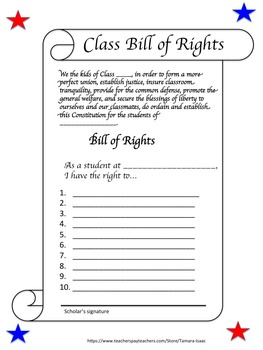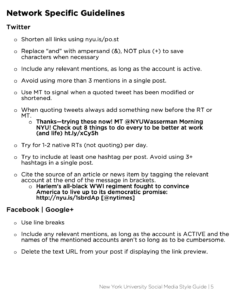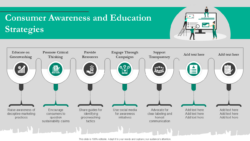Creating a positive and productive learning environment is at the heart of every successful classroom. It is a space where students feel safe, respected, and empowered to engage with their education. But how do you establish such an environment effectively and in a way that truly resonates with your students?
One incredibly powerful tool is a classroom bill of rights. This isn’t just a list of rules; it’s a foundational document collaboratively created to outline the fundamental rights and responsibilities that govern interactions within your learning community. It helps set the tone, build mutual respect, and give students a real sense of ownership over their educational journey. Think of it as a living document that guides behavior and fosters a thriving atmosphere.
Why Your Classroom Needs a Bill of Rights
Implementing a classroom bill of rights goes far beyond simple classroom management. It serves as a vital pedagogical tool, shaping not only student behavior but also their understanding of citizenship, fairness, and mutual respect. When students are involved in the creation of these principles, they gain a deeper appreciation for the value of rules and the importance of upholding them. This collaborative process transforms abstract concepts into tangible, personal commitments.

Moreover, a well-defined classroom bill of rights models real-world democratic processes. Just as a nation’s constitution outlines the rights and duties of its citizens, your classroom’s bill of rights establishes a framework for responsible participation. It teaches students that rights come with responsibilities, and that a harmonious community thrives when everyone understands and respects these boundaries. This prepares them for active engagement in society beyond the classroom walls.
Beyond these foundational lessons, a bill of rights can significantly reduce classroom disruptions. When expectations are clear and agreed upon by all, there is less ambiguity about acceptable behavior. It provides a common reference point for discussing conflicts and reinforces the idea that the classroom is a shared space where everyone’s right to learn and feel safe is paramount. This proactive approach minimizes the need for reactive discipline, allowing more time for teaching and learning.
Ultimately, a classroom bill of rights fosters a sense of collective ownership and shared purpose. It moves away from a top-down approach to rules and instead cultivates an environment where students feel empowered to contribute to their learning community. They aren’t just following rules; they are upholding the principles they helped establish, leading to greater engagement and a more positive classroom culture.
Key Elements to Consider
- The right to feel safe and secure, free from physical or emotional harm.
- The right to learn without unnecessary disruption from others.
- The right to be treated with respect by peers and adults, regardless of differences.
- The right to express ideas and opinions respectfully, knowing they will be heard.
- The right to make mistakes and learn from them without fear of excessive judgment.
- The right to have their personal property and space respected by everyone.
Crafting Your Own Classroom Bill of Rights Template
Developing a meaningful classroom bill of rights doesn’t have to be an overwhelming task, especially with a solid foundation to guide you. The most effective approach involves collaboration with your students. Begin by facilitating a discussion about what makes a classroom a good place to learn, what everyone needs to feel safe, and what mutual respect looks like. Encourage them to think about not just their own rights, but also the responsibilities that come with those rights.
Once you have a collection of ideas, help students categorize and refine them into concise, positively phrased statements. For example, instead of “No yelling,” you might phrase it as “We have the right to learn in a calm and peaceful environment.” The language should be accessible and understandable for your specific age group. This process of refinement is crucial for transforming raw ideas into actionable principles that everyone can agree upon and uphold.
After the core rights and responsibilities are drafted, it’s essential to formalize them. This could involve having students sign the document, display it prominently in the classroom, or even create a decorative version that serves as a constant visual reminder. Regularly refer back to the bill of rights during class discussions, especially when addressing conflicts or celebrating positive behaviors. Make it a living document, not just a static poster on the wall.
Remember, the goal of creating a classroom bill of rights template is to establish a framework for a respectful and productive learning community. It’s an ongoing process of teaching, modeling, and reinforcing the principles you’ve all agreed upon. The template provides a starting point, but the true power lies in the collaborative effort and continuous commitment to upholding these shared values throughout the school year. It empowers students and sets the stage for a truly remarkable learning experience.
- Involve students actively in the brainstorming and drafting process.
- Use clear, positive, and age-appropriate language for each statement.
- Focus on both rights and corresponding responsibilities for balance.
- Keep the list concise and memorable, typically between 5 and 10 key points.
- Display the finalized document prominently in the classroom for easy reference.
- Revisit and discuss the principles periodically throughout the year.
Establishing a well-thought-out classroom bill of rights is an investment that pays dividends throughout the academic year. It creates an environment where students feel heard, respected, and accountable, fostering a true sense of community. By empowering them to take ownership of their learning space, you’re not just managing a classroom; you’re cultivating responsible, engaged citizens ready to contribute positively.
The shared understanding and commitment fostered by such a document lay the groundwork for a more harmonious and effective learning experience for everyone involved. It builds a foundation of trust and respect that can profoundly impact student behavior, academic performance, and overall well-being. Embrace the opportunity to build a truly student-centered and empowering educational space.



